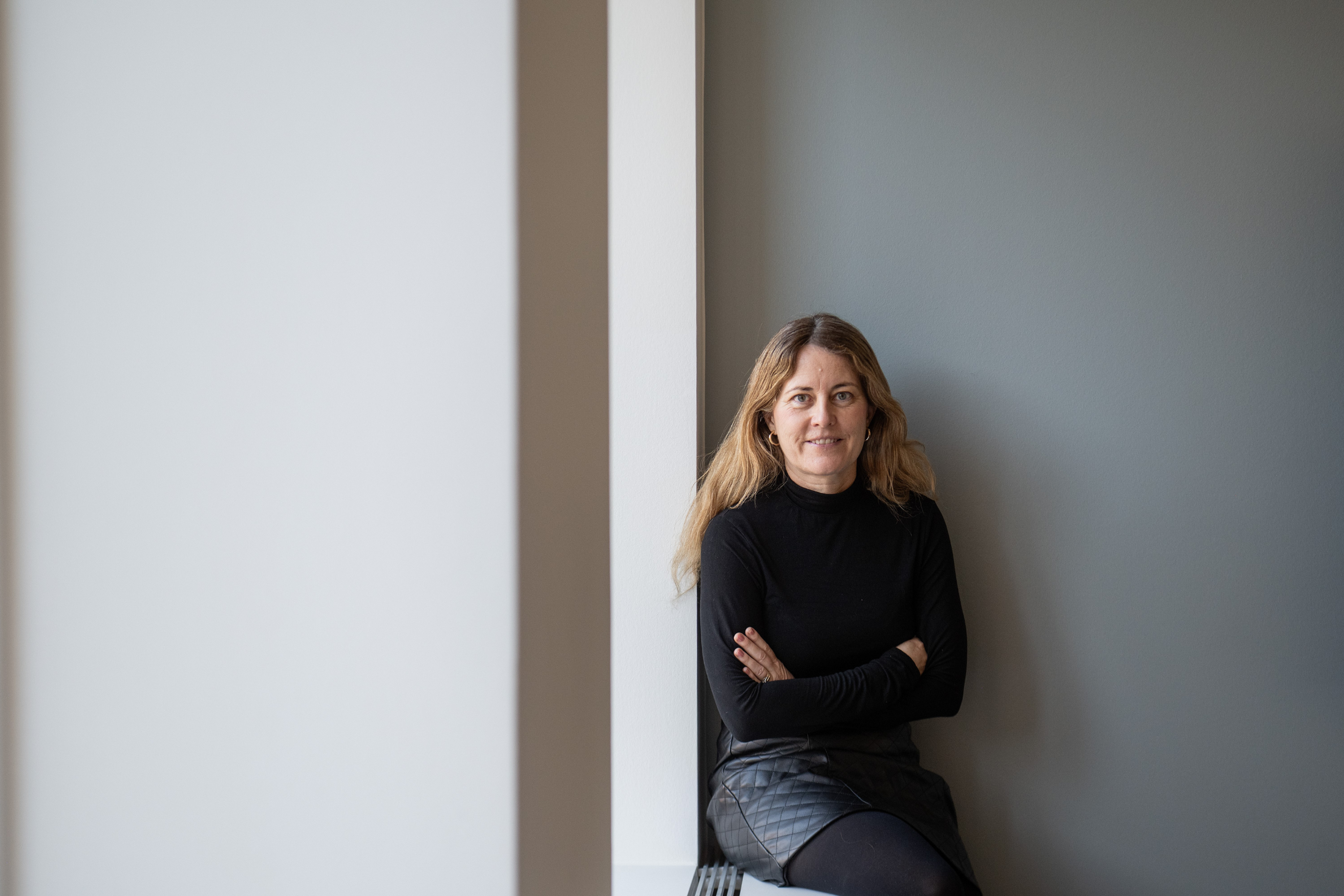Electric car batteries get a new life on Samsø

A container filled with used Tesla batteries will soon provide guests on Samsø with more green power. The battery solution was developed in collaboration between 4-Leaf Consulting and researchers from DTU and is intended to increase the circular approach to electric car batteries balancing the electricity grid.
For many years, Samsø has been Denmark's renewable energy island with a number of concrete projects focusing on green transition. The Energy Academy is part of this effort, and as a project house on Samsø, it has played a central role in communicating the island's efforts to up to 3,000 climate tourists per year.
With the new project Climate City Energy Academy, climate tourists will have a living lab where they can experience a number of energy technology solutions - while also being able to stay overnight sustainably. The climate city, which is based on sustainable construction, will have solar cells, thermal grids, buffer tanks and a battery that is connected to the grid and mounted in a ten-foot container. It has a capacity of 124 kWh and can be expanded to 248 kWh.
Bridge to partners and knowledge
The collaboration between 4-Leaf Consulting and DTU originated in an initial project with various partners, including the local company Sambyg. Energy Cluster Denmark, Denmark's national energy cluster, has facilitated the project, which is supported by the Danish Business Development Agency with EU funds.
"It is extremely positive to see that an initial dialogue between our smaller companies and researchers in Denmark and abroad can quickly lead to the development and demonstration of concrete, climate-friendly products. In one year, the partners have created a new solution with green balancing for the construction on Samsø. Once the solution has been fully tested, the partners can further develop the scaling of the battery so that it can be sold as something new to the market - based on recycling," says Marie Vedel, project manager at Energy Cluster Denmark.
The circular approach to used electric car batteries is gaining attention around Europe and not least in Denmark, says Jesper Østergaard from 4-Leaf Consulting. He also chairs the battery working group at the Danish Center for Energy Storage - DaCES, where a memorandum on the strategic areas of focus for batteries in Denmark has just been published.
“4-Leaf Consulting is setting up a separate company to work on the battery solution, which is easy to scale up to a certain point. A twenty-foot container will be able to deliver a capacity of 500 kWh, and we probably see the market for our solution in the mid-range of 100 kWh – 1 MWh. If the need is for larger batteries, what you could call grid-scale batteries, there are other solutions in the market that match better than ours,” says Jesper Østergaard and continues:
“The market is in its infancy with approximately 1 GWh of batteries available right now, but by 2030 approximately 17 GWh is expected – and by 2035 approximately 99 GWh. This is a battery capacity that could make a significant difference in supporting an electricity system based on solar, wind and batteries,” says Jesper Østergaard.
Circular use is essential
The circular approach to the energy system is also very important from a resource perspective.
According to Jesper Østergaard, batteries for electric cars are of the highest quality on the market, so-called automotive grade, and should therefore be utilized to the maximum.
“The batteries are in the electric cars until they have a residual capacity of 70-90 percent. At that time, typically after 8-10 years, the range is reduced, and then it may be appropriate to put another battery in the car – or have it scrapped. For materials in cars in general, approximately 86 percent of the materials are recycled. But for the batteries, which have a residual life until they reach a residual capacity of 30-40 percent, they still have great value before they are sent for recycling,” says Jesper Østergaard.
Recycling of electric car batteries as a stationary battery therefore constitutes approximately two-thirds of the battery's life cycle, depending on how you choose to operate the battery.
The future
According to 4-Leaf Consulting, the partners in the innovation project have learned a lot from the process.
"We have focused on batteries from Tesla Model S and X. We will be using them in many different contexts. This can be in everything from housing associations and industrial companies to energy communities, critical infrastructure and other places. An interesting feature of our battery is that it can run in island mode. This means without connection to the power grid. This will be great for, for example, a waterworks where the pumps need to be able to run in the event of a power grid failure - for example, during an attack. We are now faced with developing a battery solution where we will use batteries from Tesla Model 3 and Model Y, which are somewhat different, and where we will need new partners. We look forward to that in the new year," says Jesper Østergaard.
Latest news
Skibsbyggerivej 5, 3. sal.
9000 Aalborg
Navitas
Inge Lehmanns Gade 10
8000 Aarhus C
House of Offshore Innovation
Kanalen 1
6700 Esbjerg
Port House
Vendersgade 74
7000 Fredericia
BLOXHub
Bloxhub, Bryghusgade 8, 3. sal,
1474 København K
Energy Cluster Denmark
Nørre Havnegade 43
6400 Sønderborg
©Energy Cluster Denmark 2025






